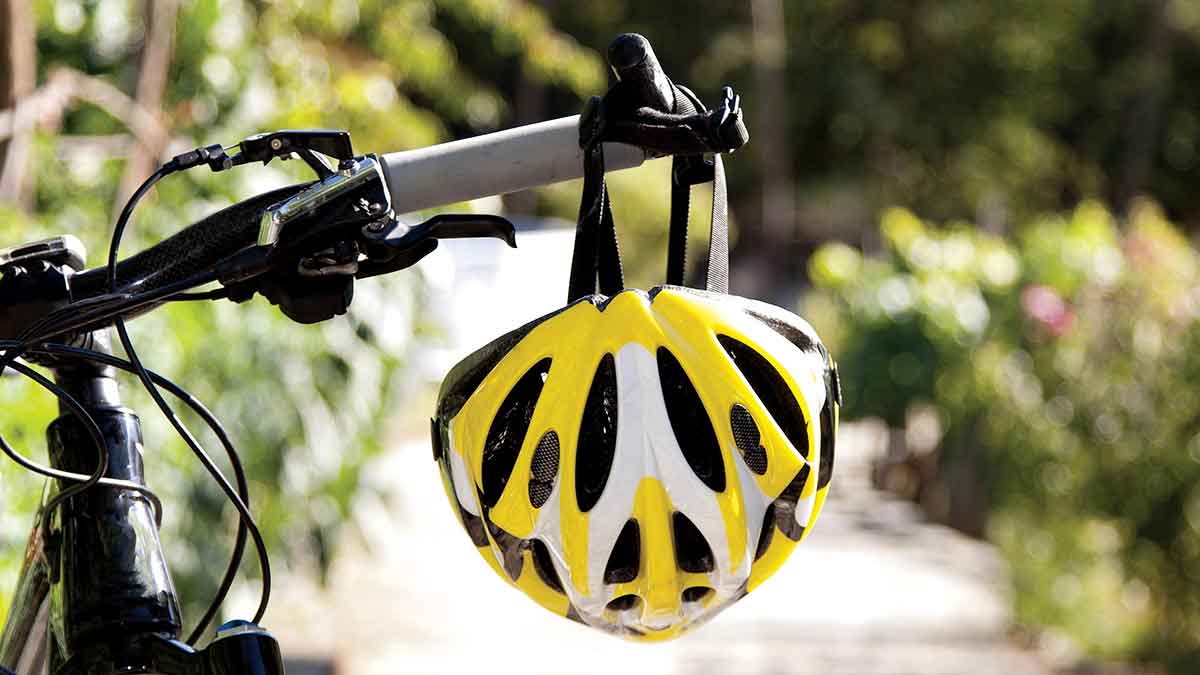Cycling Safety
Cycling, be safe and enjoy your ride

Global December 02, 2021
Traffic laws imposed on cars also apply to bicycle riders, including stopping at a red traffic light and moving at a green light.
There has been an increase in the use of bicycles for transportation and sports. According to the statistics of the World Health Organization, 50% of traffic accident victims are pedestrians, and bicycle and motorcycle riders.
Some important tips when selecting a bicycle:
• Make sure you try the bicycle, and ensure your feet touch the ground while sitting. When you put your feet on the pedals, you should be able to slightly bend your knee.
• Inspect the bicycle and check the safety of its wheels/tires and their air pressure, check the quality of the brakes, and ensure that the bolts are fitted firmly.
Safety Equipment
• Helmet: Always wear a helmet and ensure it is the right size for your head, and the chin strap firmly fits under your chin. It should cover the forehead with a distance of two fingers above the brow. If your helmet experiences a strong shock, you must replace it since it loses much of its toughness after a shock.
• Clothing: Wear bright colors to be visible to others.
Bicycle riding laws
Traffic laws imposed on cars also apply to bicycle riders, including stopping at a red traffic light and moving at a green light, and adhering to any signs and instructions at intersections. Always stop at a STOP sign. You should be familiar with the updated and most recent laws in the area you ride.
Bicycles don’t have side lights; therefore, you need to use your hand and arm to give signals.
• Before changing your lane, you need to look behind to ensure there is enough distance between you and other vehicles.
• Avoid using headphones while riding, as it will prevent you from hearing the warning of others.
The riskiest areas for riders are intersections, therefore, indicating by hand is not enough. You have to have eye contact with the drivers of other vehicles to ensure they have noticed your presence.
Be careful when moving around a parked vehicle, as someone may open the door without knowing that you are passing by.
Riding at night
Wear reflective clothes to help others notice you. Rear and front lighting must be available.
Always keep a safe distance between you and other vehicles.
Cycling safety tips
The following tips will enhance cycling safety:
• Do a quick bicycle test: Ensure your bike is in good condition.
• Wear biking gear: Wear your helmet to protect your head, and eyewear to protect your eyes from dirt and debris.
• Stay visible: Wear reflective clothing, and use lights at night to help other road users see you.
• Stay alert: Watch out for holes and debris and look out for obstacles in your path.
• Go with the flow: Avoid swerving left and right on the road. Bike in the direction of traffic in a straight line.
• Use hand signals to let drivers and other bicyclists know where you’re going. Look and make eye contact. Don’t assume drivers will stop.
• Follow all traffic laws and lights.
• Be very cautious at blind spots — think ahead before you react.
Test your knowledge about bicycle safety by taking the Traffic Safety Monthly quiz offered by the Traffic Safety Signature Program Division (TSSPD).
For more information about cycling safety, visit https://qyadati.com/.



